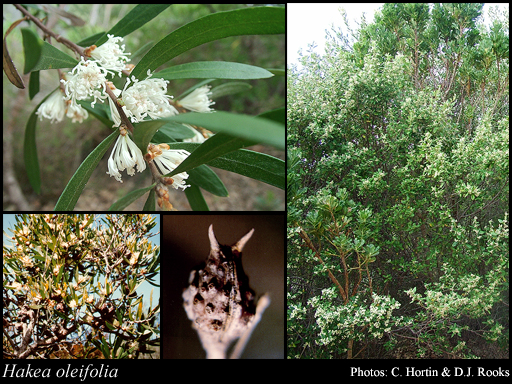- Reference
- Trans.Linn.Soc.London 10:185 (1810)
- Conservation Code
- Not threatened
- Naturalised Status
- Native to Western Australia
- Name Status
- Current
Erect shrub or tree, 2-10 m high. Fl. white, Aug to Oct. Grey or red/brown sand, peaty sand, sandy loam, clay, laterite, granite, limestone. Coastal sites.

Scientific Description
Trees or Shrubs, 2-10 m high; branchlets hairy. Leaves alternate, 20-90 mm long, 5-25 mm wide, hairy or glabrous; lamina flat, widest around the middle, entire. Inflorescences axillary, white; pedicels 4-6 mm long. Perianth 4-6 mm long, glabrous; ovary glabrous; pistil 5-7 mm long, pollen presenter conical, style glabrous. Follicles 20-30 mm long, 12-20 mm wide, corky tetrahedral projections (on external surfaces of fruit) absent; seed 11-16 mm long (including wing), 8-10 mm wide, the wing discontinuous, marginal, extending down one lateral side only. Flowers in August, September or October. Occurs in the South-west (SW) Botanical Province(s), in the Jarrah Forest (JF), Warren (WAR) or Esperance Plains (ESP) IBRA subregion(s).
Distribution
- IBRA Regions
- Esperance Plains, Jarrah Forest, Warren.
- IBRA Subregions
- Fitzgerald, Southern Jarrah Forest, Warren.
- IMCRA Regions
- Leeuwin-Naturaliste, WA South Coast.
- Local Government Areas (LGAs)
- Albany, Augusta Margaret River, Bridgetown-Greenbushes, Busselton, Denmark, Jerramungup, Manjimup, Nannup, Plantagenet.